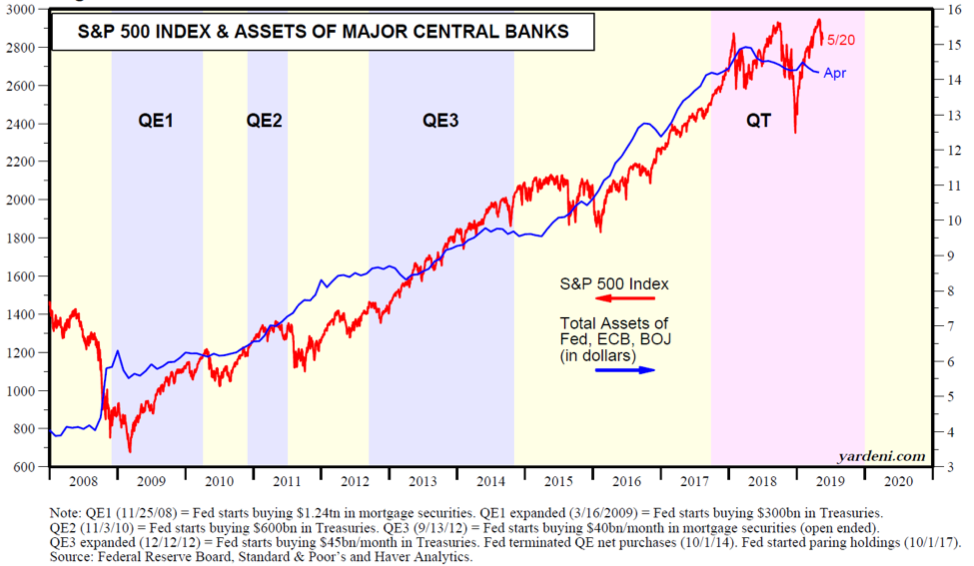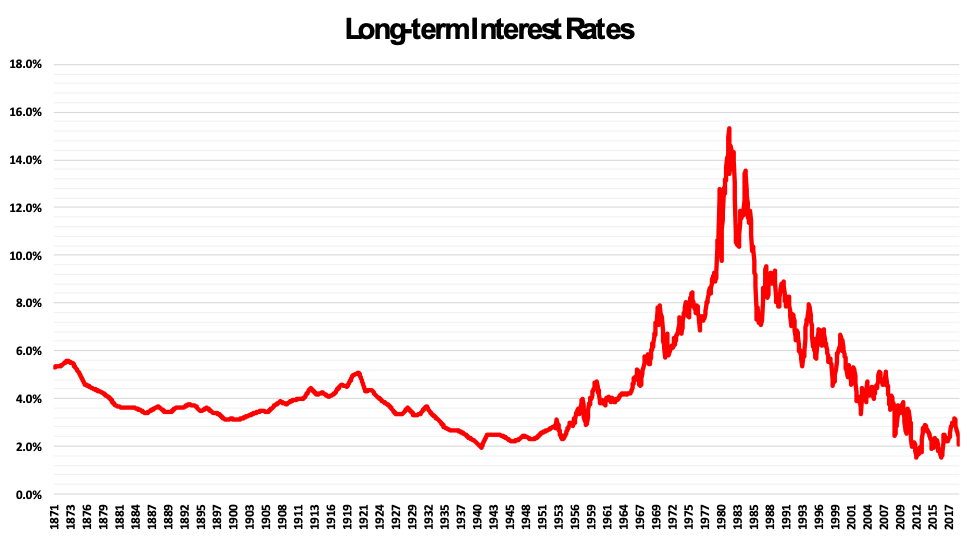Advisor Perspectives welcomes guest contributions. The views presented here do not necessarily represent those of Advisor Perspectives.
Q2 hedge fund letters, conference, scoops etc
“In the financial world, good ideas become bad ideas through a competitive process of ‘Can you top this?’”
Jim Grant
We live in interesting times, at least when it comes to the financial world. Since the global financial crisis (GFC) shook the financial world more than 10 years ago, central bank balance sheets have continued to expand. As Figure 1 shows, combined total assets of the Fed, ECB, and BoJ have increased by nearly four times.
In a policy world dictated by once-bitten, twice-shy response mechanisms, central banks have been conducting policy with a promise to not let an event like the GFC recur. However, they are confusing the symptoms with the cause. The result is that central banks are too focused on financial market prices. They are conducting policy based on such prices and their tolerance levels for price declines is getting narrower.
The impact of these misplaced policy actions has been to suppress interest rates and fan mispricing of risk. Consider that nearly $13 trillion worth of bonds are priced for negative yields globally. As per a story on ZeroHedge, there are 14 euro-denominated junk bonds that carry a negative yield1. Clearly, market participants are pricing these securities for greater fools.
Figure 1. Central bank balance sheets and the S&P 500 index
Source: Central Banks: Balance Sheets, Yardeni Research, May 20, 2019
Figure 2 shows the long-term interest rates for the U.S. Interest rates are in the all-time low zone.
Figure 2. Long-term interest rates, U.S.
Source: Data from Robert Shiller
The impact of interest rate changes on equity pricing
Interest rates are a central piece of the security pricing exercise. Market participants base the discount rates on the sovereign bond rate, which is the proxy for risk-free rate.
Interest rates, directly and indirectly, affect the valuation exercise in four primary ways. They affect the discount rates. They have an impact on corporate cash flows available to equity shareholders via interest expenses. To the extent that interest rate changes have been driven by changes to economic growth outlook, they affect the growth rate of corporate cash flows. And, lastly, they affect the terminal valuation multiple applied to cash flows at the end of the forecast period.
Read the full article here by Baijnath Ramraika and Prashant K. Trivedi, Advisor Perspectives


